The Character of Cricket Read online
Page 3
Before the Great War you might have expected the driver of the hansom you hired at the LMS station to be a little confused about who played where, but all three grounds are quite distinct now. Forest’s, however, is much the most ostentatious, with a colossal new stand in which the red-and-white seats are arranged to spell out the club’s name in vast letters.
We crossed the Radcliffe Road and entered by the gates to the right of the Trent Bridge Inn, just past the Larwood Lounge. A lot of litter on the ground. The flags fluttering proudly from the TBI were those of Skol and Double Diamond, though it was Nottingham and Leicester who were playing. All this summer the beer sponsors are much in evidence, especially the Australians. One unfamiliar one is Castlemaine XXXX. It is explained to me that they put XXXX because Australians do not know how to spell beer. I enjoy this joke because the Anglo-Australian rivalry is supposed to be spiky and too much of the spikiness has been Australian.
In the very old days the TBI used to be the Trent Bridge pavilion but that was long ago and the pub seems to have curiously little connection with the modern ground. It’s like a fern bar inside, with low lights and greenery, moussaka, and wine by the glass. If you want to go for a meal you have to get an exeat from the man on the gate and go round to the front; there is no way in directly from the ground. The clientele appear to be office not cricketing folk.
I took Alexander, who was thirteen at the time, because I had always felt that Trent Bridge was a small boy’s ground, a view confirmed by Cardus who called it ‘the schoolboys’ happy hunting ground’. In his day a boy could get a good seat for sixpence. Fifty years on it’s a pound, which still seems good value, not least because there is a wide expanse of grass near the single net at the side of the ground and on the day we were there a robust pick-up game was in progress. It’s just as it was in Cardus’s time, when they played Nottinghamshire against Lancashire in miniature – ‘the smallest boy Larwood. And as they do so they can keep their eyes on the real Larwood, and “monkey” his actions from the life.’ As we watched it was Derek Randall they aped.
Michael Jayston, the actor, remembers how, as a boy, he bowled to an elderly George Gunn in the nets. In half an hour Gunn only missed one ball – but then he was using a walking stick for a bat.
It is less of a small boy’s ground these days, just as most of life is less generous to small boys. At one point, when I was off searching for the elusive Harry Dalling, Alexander went and sat on the grass. There should have been no problem over this, since he was well to the spectators’ side of the boundary. Needless to say, however, the inevitable officious official was soon on the spot, ordering him back into the stand. There was a reason for this of course: Alexander was dangerously close to the board which said ‘Andrews Cleaning Equipment’. Had he prevented the several hundred spectators from having an uninterrupted view of their sign, Andrews Cleaning Equipment might possibly have withdrawn their support. In modern county cricket there are too many times when sponsors and advertisers take precedence over small boys.
Nottingham against Leicester is a local Derby – or would be if it was Forest against City. But it was a spotty little third-day crowd, which was a pity because Randall started the day on thirty and went on to make a century. Early on, against speed, he once did a wonderfully theatrical pratfall and lay motionless on the grass for several seconds before getting up and dusting himself off and doing a little jig. Born in Retford, he’s an authentic local star, Derek Randall, with a sponsored car like any other sporting star. It has ‘Derek Randall Drives with New Crown’ written on it, and he had parked it rather anti-socially beside the pavilion where it blocked several others.
When the slow bowlers came on he got a bit bogged down, to the evident disgust of a trio behind me in the stand opposite the car park who looked as if they were understudying for the three in Last of the Summer Wine. ‘Only way he’s going to get runs is if he moves his feet,’ said one of them, an elderly black man with a thick Nottingham accent. ‘Like Johnson.’ And they all nodded sagely as Johnson scampered down the wicket in a charge on the spinners, while the Retford imp played as if his back foot had been cemented to the wicket. Still, he got his hundred and wasn’t out, which left him top of the first-class averages by a street.
It was the librarian, Peter Wynne-Thomas, who first told me about Harry Dalling. Mr Wynne-Thomas is the author of a useful slim volume called Cricket Grounds of Nottinghamshire, and much else besides. When I saw him his mind was full of his new biography of Arthur Shrewsbury, W.G. Grace’s favourite, but when I explained that I was looking for an authentic old Trent Bridge hand he had no hesitation. ‘Harry Dalling,’ he said. ‘Well, he was born and bred on the premises, wasn’t he?’
There were other candidates. A couple of men who came along for every match and filled in their scorebooks ball by ball; Reg Simpson, who often dropped in from the Gunn and Moore bat factory where he was managing director. Not as many ex-players hung around the way they used to, in Mr Wynne-Thomas’s opinion. He remembered the Gunn brothers sitting in the same chairs match after match arguing happily way into retirement. His own observations led him to conclude that once a modern player finished he was no longer interested in watching his successors.
My search for Harry Dalling provoked much hilarity. He has an office but is seldom in it. Every time I asked one of the attendants or gate-keepers, whose boss Mr Dalling is, they would grin and say they’d been talking to Mr Dalling just ten minutes ago and he went thataway. Advised to check in at the office and shop just inside the main gates, I was met with similar merriment and comparisons between Mr Dalling and the needle in the haystack. Eventually a consensus emerged that he would be in the public address office in the pavilion. To reach this you have to climb to the top of the building where there is a sort of ‘executive’ dining area behind ugly plate glass. Marvellous view from within, a hideous excrescence from without, it has the unmistakable whiff of sponsor and expense account which have become, for better or for worse, so much a part of the modern game.
After running the gauntlet of the late lunchers, I was out into the open and on to an iron fire-escape-style staircase and down to a passage running the length of the pavilion. A series of glass-fronted rooms lead off this. The scorers sat in one and said that Mr Dalling would be along at the end – but the room was empty. I kept trying until one of the stewards took pity on me and said that when he finally showed up they would page me on the Tannoy. So I wandered off to the Radcliffe Road end, noticing with pleasure that a member in front of the pavilion was actually wearing a knotted handkerchief. I could not remember the last time I had seen anyone in a knotted handkerchief, let alone sitting in front of a long room. At Lord’s no one in the pavilion would be seen dead with anything but a Panama on his head.
The Radcliffe Road Stand is the noisy bit where the barrackers sit – Trent Bridge’s Kop, though such things are relative. Most of the onlookers were of pensionable age and their minds were not always on the cricket.
‘Oo played in that shield thing before season?’ one man was asking his friend.
‘Oh aye,’ said the other, ‘Everton. They beat Liverpool. They’ve won nothing Liverpool. Nothing.’ This was understatement coming only days after the disastrous European Cup final in Brussels. That horror seemed worlds away from the Trent.
‘Ooh! LBW. Now we’ve got a real chance. I still think we’ll win it.’
‘Oh aye.’
Southerners like me find it hard to accept that anyone outside a Bill Tidy cartoon ever says ‘Oh aye!’ – just as northerners can’t believe that real people ever say ‘Gosh!’ or ‘I say!’ or ‘Super!’
Suddenly a Nottinghamshire player dropped a catch. Not a very difficult one.
‘Well I’ll go to bloody ’ell,’ exclaimed the most vociferous of the pensioners, addressing the rest of us with an expression of incredulous disgust. ‘ ’E were fast asleep. Fast a-bloody-sleep.’ And he slapped his thigh and fell to muttering.
Tempers we
re shortening a little at the Radcliffe Road end. Two twelve-year-olds were eating sweets and throwing the wrappers about. The man behind lent forward and said, ‘’Ey you two. Stop it or booger off somewhere else.’ The two lads stopped it but boogered off a few minutes later and I boogered off with them. No message had come over the Tannoy, but I judged it time to brave the executive crow’s nest and the iron staircase and look for Harry Dalling.
He was there this time, very neat in brown, and gazing out at the play from behind a microphone. No, he said, he hadn’t actually been born on the ground, but very close. His father had been superintendent of the ground just as he was now. He had only ever left Trent Bridge during the war.
‘When I was a boy of seven or eight years of age,’ he said, ‘Walter Marshall was the groundsman and he lived in the pavilion. And every year when the Marshalls went on holiday we would move into the pavilion. Mrs Turner still lived there too. Her husband was the secretary in the 1890s. I’d take Mrs Turner to St Giles’s church. And in 1929 she gave me a prayer book.
‘In those days at night the anglers used to come in to look for worms. You’d see their lamps all over the ground. And where the squash courts are there were chickens and apple trees.’
After he succeeded his father, Harry Dalling slept in the pavilion until 1956. He remembers taking tea with the players when Notts played Surrey in the thirties, and he remembers Bradman making a hundred and thirty-odd in the late thirties and D.R. Jardine coming down to present something or other to Larwood and Voce. He was there when they built the Parr Stand, which was supposed to be a covered stand but the roof blew off. And he told me how years ago Monday was called ‘butchers’ day’ because butchers always had Mondays off and they used to come along to Trent Bridge every Monday; and how in the old days they used to ring two bells before an innings, whereas now it’s only one. The first one was known as the ‘saddling bell’, presumably because it was the signal to get padded up.
Harry Dalling played a bit for the ground staff and the Second XI and was a useful leg spinner. Like most leg spinners his eyes glaze over when he talks about the almost forgotten art. He was hugely pleased that the Australians had brought one over.
He scored for a while after the war and was on duty the famous day in 1946 when Warwickshire’s Eric Hollies got ten for 46 against Notts. The old scorebooks are all in the library downstairs. One oddity is that until quite recently the Trent Bridge Test matches were recorded in the Notts Second XI scorebooks.
It was in 1949 that he took over as ground superintendent, responsible for ‘everything outside the boundary rope’. He and his father and his brother, and now his nephew who is assistant groundsman, have given years of service, but in the long history of Trent Bridge it is but an evening gone.
Mr Dalling told me the story of the origins. It all began with a publican called William Clarke who was one of the great underarm lob bowlers, probably the best in England. He played in Sherwood Forest until he began to court Mary Chapman, the landlady of the Trent Bridge Inn. After they were married Clarke fenced off the open meadows round the TBI and on 10 July 1838 T. Barker’s side played W. Clarke’s side on ‘Clark’s new ground at Trent Bridge’. Just over two years later Notts played Sussex. ‘Clark,’ said Mr Dalling, ‘was the first Kerry Packer. He was the first man in the country to charge an admission fee.’
The remark lurked at the back of my mind all through the rest of the day as the two counties played out an inexorable draw. For all Hadlee’s aggression, Nottinghamshire never looked like getting Leicestershire out; and Leicester never looked like getting the runs – certainly not without Gower. At one point in our talk Harold Dalling had been scornful of Lord’s and MCC with words to the effect that the high point of their season was Eton versus Harrow. Then I read Frank Keating’s obituary of Percy Fender in the Guardian in which he said that Fender had once overheard a President of MCC refer to him as a ‘smarmy Jew-boy’. And I thought of that great Notts benefactor Sir Julien Cahn with his own ground and his own team, good enough in Harry Dalling’s estimate to beat any modern county. Sir Julien left his cricket bats, over a hundred of them, to Trent Bridge. He was never persona grata at Lord’s.
And then I remembered my son Alexander being removed from the grass in case he obscured the sign which said ‘Andrews Cleaning Equipment’, and A.W. Carr, who was sacked by Eton and ended up at my old school, who once hit a massive six over the old secretary’s office at Trent Bridge and who captained Larwood in the days when Gents and Players had separate dressing-rooms. And I thought that this ground on the Trent which symbolically divides two Englands was perhaps itself a symbol. The first ground to charge admission. The ground which spawned Larwood. The ground with the ostracised Jewish benefactor.
It’s very wide, Trent Bridge. You used to be able to get 7,000 spectators on the turf. ‘Whenever I go to Lord’s,’ says Harry Dalling, ‘Lord’s seems so small. Here you can run five if you hit it to the far corner.’
‘Oh aye,’ I thought, as I retraced my steps past the Larwood Lounge and over the Trent, and I wondered whether he had meant it literally or metaphorically. The further north I travelled in cricket, the smaller Lord’s seemed to become.
Hove
Only sixty-six and two-thirds per cent of those in the immediate vicinity of Brighton Railway Station knew there was a cricket ground in town, let alone that the Australian tourists were playing on it. That was the result of my snap poll conducted shortly after getting off the train from East Croydon. Worse still, the two-thirds who knew where the cricket ground was suggested I either went by bus (6 or 37) or on foot via the Seven Dials roundabout and Goldsmid and Davigdor Roads. I footed it up the hill and down past the Davigdor House Rest Home and the green gabled Windlesham Club (founded 1905), overtaking an Indian gentleman in grey flannels and blazer and binoculars slung about him Sam Browne style. Facades were peeling around the Brighton-Hove border, and there was a sense of cat and old landlady. I noticed the Legal and General’s snazzy new glass and brick and the Doris Isaacs School of Dancing in less opulent surroundings and I almost missed the cricket ground because of that obstructive modern block of flats – Cromwell Court – which dominates the North End.
They were wrong, the sixty-six and two-thirds who knew there was a cricket ground. On leaving the station you should walk south to the sea and then west along the promenade, past the Metropole and the derelict West Pier until you arrive at a wonderfully grand statue of the old Queen herself erected by the burghers of Hove in 1897. March up Grand Avenue, Hove for about three blocks, note the Victorian vastness of the Hove Parish Church – All Saints, all locked up – and the Sussex Cricketers public house, which stands as a convivial sentry box at the entrance of the ground. You can actually walk into the bar, collect a pint and enter the ground through the beer garden. In theory, anyway.
Don’t be dismayed by the sign which says ‘No Dogs’, nor its companion, equally discreet in gold on blue, which says, ‘no cricket guaranteed’. Just carry on through the Tate Gates, erected in memory of one of Sussex’s greatest opening bowlers, and you’re in Sussex by the Sea, a charming oasis of deck chair and hand clap and ghosts of Ranji and Duleep and C.B. Fry, of Tony Greig and John Snow and the present Anglican Bishop of Liverpool, who played here when he was simply D.S. Sheppard.
There is a front and a back entrance to the County Ground at Hove and you must always use the front.
Because Sussex were playing the Australians the Sussex Cricketers had a large banner up advertising Fosters lager, the vin ordinaire of Australia. I turned right, past the indoor cricket school erected in memory of A.E.R. Gilligan, captain of the county in the twenties, and found a seat at the back of the stand in the south-east corner of the ground. I say ‘the back’, but the stand is in such a state that the very back has been cordoned off as too dangerous. Most of the concrete seems to have split. To my right was a rather splendid scoreboard-cum-clocktower, with loudspeakers sticking out of the top like a couple of dowager�
��s ear trumpets.
You would be pushed, I think, to call it a pretty ground. To north and south it is dominated by large modern blocks of flats. These have a commanding view of play but the inhabitants of the flats were all out at work or not keen on cricket because there was no one on a balcony nor with a face pressed to the glass. The Gilligan indoor school is by no means a thing of beauty, though it is practical. There are seats on the roof, which causes a certain amount of trouble with spectators moving about behind the bowler’s arm. The pavilion complex reminded me strongly of a house I once inhabited for a year in Toronto. The house had started life around the turn of the century as a modest two up, two down Colonial residence but generations of settlers had found it too small. Each one appeared to have tacked a bit on, probably with his bare hands. The pavilion at Hove is a bit like that. Somewhere lurking in there is an original building but it is so barnacled about with extra seating and what appear to be small greenhouses that it is impossible to detect. The most charming part of the ground is the North End. This is a sloping green bank with several rows of gaily striped deck chairs. You can’t actually see the sea but it is a welcome reminder that it is only about three blocks away. Less enjoyable, I thought, were the hard boiled eggs. I counted half a dozen of them, very large and garish, scattered round the boundary, and manufactured, presumably from some sort of polystyrene. The clue to the eggs was in a hoarding which said ‘Stonegate Country Eggs’ and a small note on the scorecard which said, rather strangely, ‘Please let us have your empty Stonegate Egg Packs, each one is worth 3p to Sussex.’

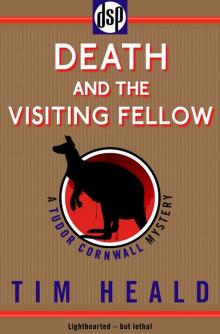 Death and the Visiting Fellow
Death and the Visiting Fellow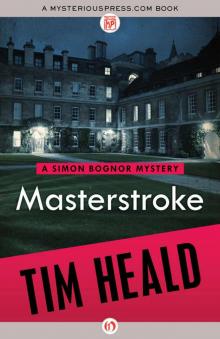 Masterstroke (The Simon Bognor Mysteries)
Masterstroke (The Simon Bognor Mysteries) Deadline (The Simon Bognor Mysteries)
Deadline (The Simon Bognor Mysteries)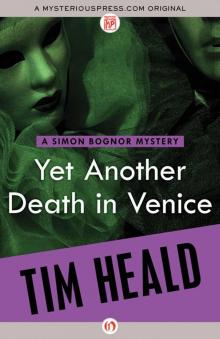 Yet Another Death in Venice (The Simon Bognor Mysteries)
Yet Another Death in Venice (The Simon Bognor Mysteries) Just Desserts (The Simon Bognor Mysteries)
Just Desserts (The Simon Bognor Mysteries)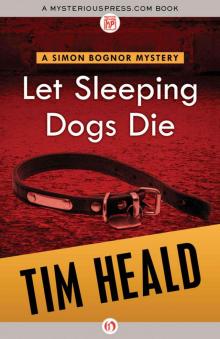 Let Sleeping Dogs Die (The Simon Bognor Mysteries)
Let Sleeping Dogs Die (The Simon Bognor Mysteries)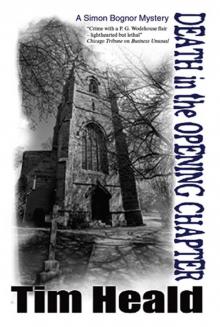 Death in the Opening Chapter
Death in the Opening Chapter Blue Blood Will Out (The Simon Bognor Mysteries)
Blue Blood Will Out (The Simon Bognor Mysteries)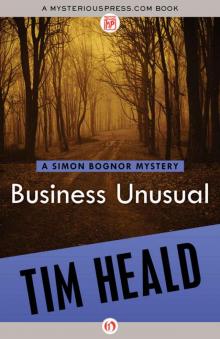 Business Unusual (The Simon Bognor Mysteries)
Business Unusual (The Simon Bognor Mysteries)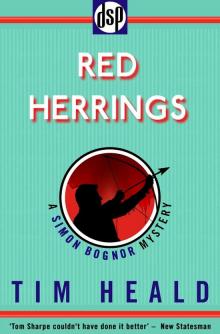 Red Herrings
Red Herrings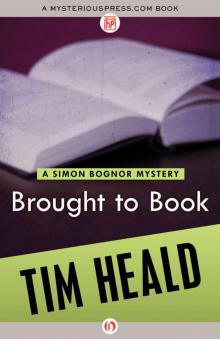 Brought to Book (The Simon Bognor Mysteries)
Brought to Book (The Simon Bognor Mysteries)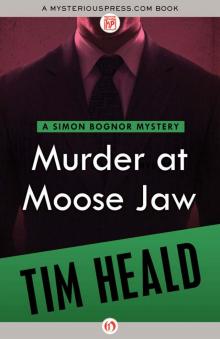 Murder at Moose Jaw (The Simon Bognor Mysteries)
Murder at Moose Jaw (The Simon Bognor Mysteries)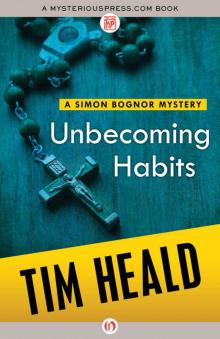 Unbecoming Habits (The Simon Bognor Mysteries Book 1)
Unbecoming Habits (The Simon Bognor Mysteries Book 1)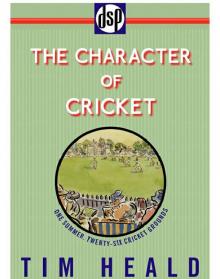 The Character of Cricket
The Character of Cricket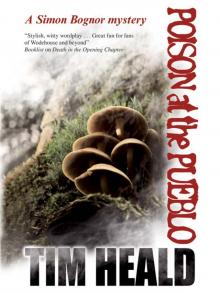 Poison At The Pueblo
Poison At The Pueblo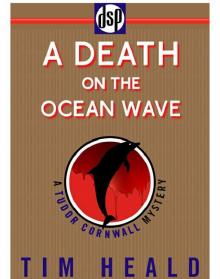 A Death on the Ocean Wave
A Death on the Ocean Wave